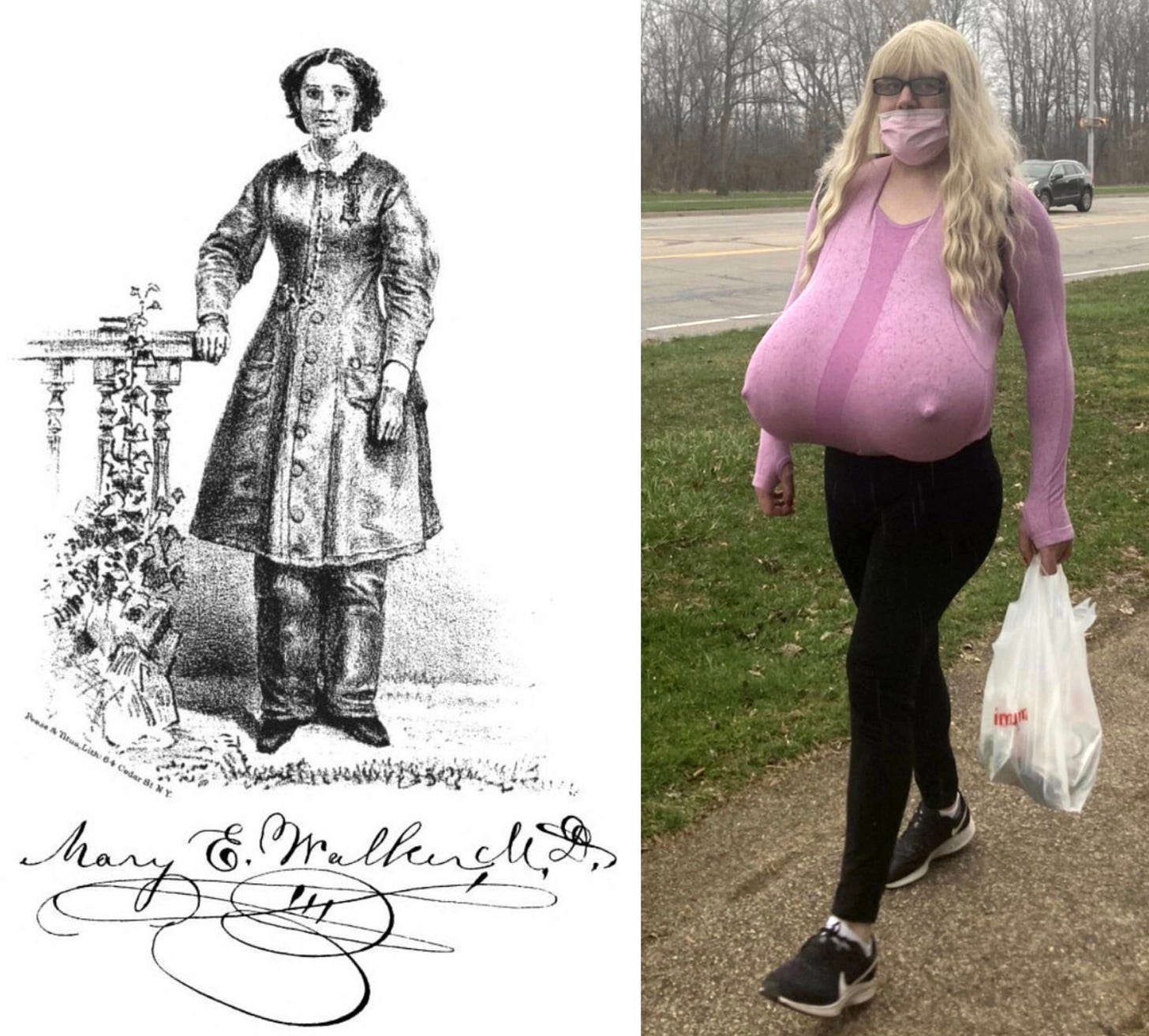From Rational Dress to Balloon-Boob Boogaloo
“Self-expression” and the limits of the bit
The debasing and unsatisfying babble of representation through another, of the beauty of feminine delicacy and dependence, has had time to echo and reecho itself… she has listened to it, paid homage to it—she is weary of it, she feels its emptiness with reference to that inward life which is not yet utterly extinguished.
- Sarah Grimké, “Sisters of Charity,” c. 1852-1857
I have been thinking about J.K. Rowling’s statement of “Dress however you please,” posted on December 19, 2019. Even those otherwise unfamiliar with the conflict between women’s rights and “trans rights” know of Rowling’s infamous tweet in support of Maya Forstater. Her statement on freedom to dress however one pleases can be construed as endorsing anything, even dismissing otherwise valid concerns. I find it possible to acknowledge the importance of self-expression to individuality without simultaneously giving the green light to absurdity, namely male fetishism and its attendant misogyn…




